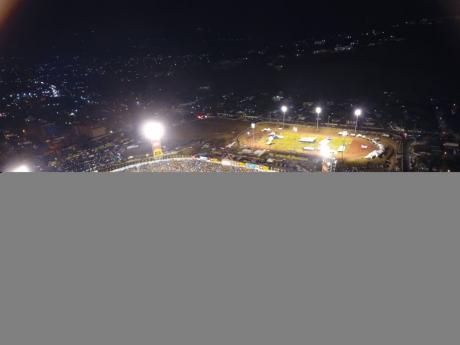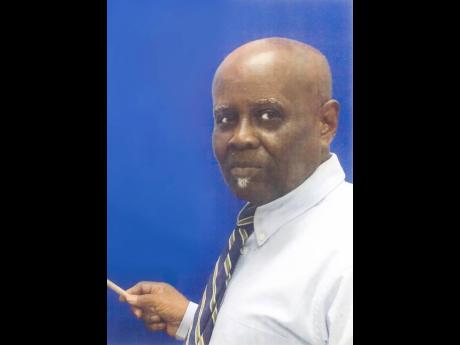Neil Richards | Dream team that built National Stadium
Shortly before Jamaica gained political independence, a relay team was assembled for the purpose of establishing a National Stadium at Briggs Park, St Andrew, which was later renamed Independence Park. That team was a quartet with diverse skills unrelated to proficiency in athletics.
The lead member of the quartet had bragging rights in athletics, but his victories on the athletics track happened in his youth, nearly 50 years before the stadium was a hot subject on the brink of implementation.
The final leg of the relay of specialists assembled for stage-by-stage participation that led to realisation of a stadium, was a specialist with proficiency in the construction of buildings.
Jamaica’s stellar performance at the 1952 Olympics in Helsinki stirred national emotions and expectation that a National Stadium would become an early priority project.
Justification for such a venture included Jamaica’s regular demonstration of its athletics prowess at international competitions, led by the achievements of Herb McKenley, Arthur Wint, George Rhoden, and Leslie Laing.
The inadequacy of Sabina Park to stage international athletics competitions was a good reason that sports journalists at The Gleaner, particularly Alva Ramsay, clamoured for a stadium that would provide suitable training and competition facilities.
In 1952, the Town Planning Department (the precursor to the currently-named National Environment and Planning Agency) was instructed by the Government to recommend a suitable site within the Kingston & St Andrew municipality for location of a stadium.
The recommendation by the Town Planning Department that Tinson Pen would be an ideal site was accepted by the authorities, and a design proposal was prepared that illustrated a stadium on 85 acres of land at that location.
ENTHUSIASM REVIVED
Enthusiasm to build a stadium waned but was revived in 1959 when there was an audacious commitment by Jamaica to host the 9th Central American and Caribbean Games in 1962. Sabina Park, was, of course, woefully inadequate for that purpose.
The challenge to host the regional games was enthusiastically embraced at the highest level of government. Premier Norman Manley initiated and energised the process to build a National Stadium.
His background as a superstar schoolboy athlete who represented Jamaica College with distinction at Champs in 1911 was a bonus qualification when he spoke eloquently in the House of Representatives of the importance of building a stadium. His advocacy on the subject defeated nay-sayers who regarded other national priorities as being of greater importance.
The previous selection of Tinson Pen as an ideal site for a stadium was rejected in favour of Briggs Park, which was regarded as ideal, especially for the sport of athletics.
Norman Manley expertly negotiated the transfer of ownership of Briggs Park from the British Government to the Government of Jamaica.
Following the selection of Briggs Park as the site for the stadium, Sports Administrator Herbert McDonald was assigned the responsibility to coordinate and accelerate the process towards realisation of the stadium. An important initiative by McDonald, who was later to become Sir Herbert McDonald, was his selection of noted visual artist Alvin Marriott to create a sculpture of star athlete Arthur Wint for prominent display near the entrance to the stadium.
APPOINTED
An architect was the next specialist appointed in the sequence of participants in the relay to achieve an excellent venue for athletics and other sports except cricket. There was belated confidence that Wilson Chong, a Jamaica architect who graduated from the University of Illinois five years earlier, was qualified to design the stadium.
Chong’s selection as architect happened after the Government previously approached expatriate British architects Norman & Dawbarn to design the project. Overtures had also been made to South Africa-born architect Harold Ashwell, but his design concept was regarded as unacceptable.
Good sense prevailed, and Wilson Chong designed a stadium that was a visual delight and was functional. Chong was the third member of the dream team responsible for realisation of the national stadium.
Construction was the final leg of the relay of responsibilities that led to the reality of the National Stadium. A consortium of builders led by Masterbuilder AD Scott replaced the first awardee of the construction contract who had experienced difficulties at the start of construction.
The expertise of AD Scott resulted in the successful completion of the National Stadium, which was the principal venue for the 9th Central American and Caribbean Games. The brand-new stadium was also the principal venue for Jamaica’s Independence Celebrations on August 6, 1962.
The quartet that consisted of Norman Manley, Herbert McDonald, Wilson Chong, and AD Scott was an exceptional ‘Dream Team’. Their combined efforts and the final result was a gold-medal achievement.
Neil Richards is an architect and town planner.



